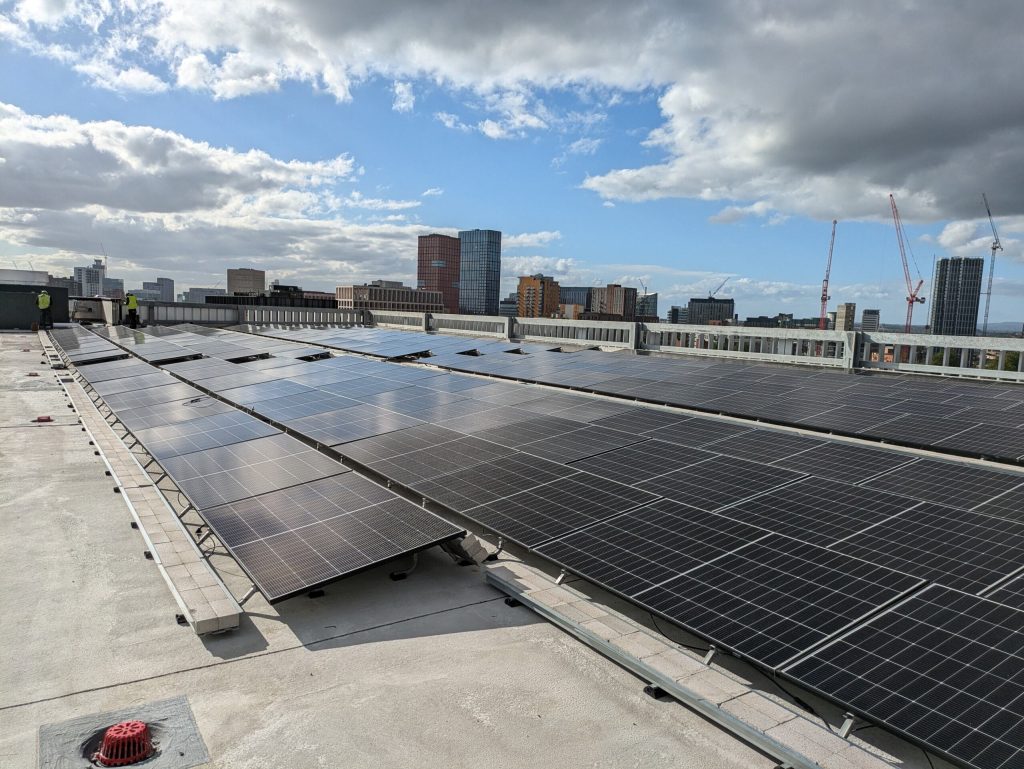The client
The building at Ancoats is a brand new, multistory, EV Charging car park. The project was delivered by Walsh IBS on behalf of Bowmer & Kirkland, a major UK construction group. The full electrical fitout of the EV charge points on each story, as well as Solar PV on the roof, was awarded to Walsh IBS due to our proven track record in delivering these projects within the Northwest.
The problem
With a site that pulls as much energy from the grid as this one will, as many carbon-saving measures as possible needed to be put in place. With no option for insulating or renewable heating measures, it was agreed that the best method to achieve this target would be Solar PV. However, the contractor had experienced a previous issue with PV array uplifting from another building, destroying the system, due to an incorrectly calculated ballast load. This lead the client to develop a company standard for all PV to be fixed to the structure.
This lead to another complication – the depth of the waterproof slab didn’t allow mechanical fixing to the structure only.

The solution
It was decided that Walsh IBS deliver a hybrid solution, combining ballast and integrated roof mounting kits. With the assistance of our suppliers, a bespoke mounting system was fabricated that penetrated the roof to a precise specified degree, combined with a ballast and shared Unistrut system which leaves the panels absolutely secure on the 12 story roof. The cabling was then run down the riser to the inverter, mounted safely in the top floor riser, with safe isolation there and again in the main plant room on ground level.
The outcome
The building will produce consistent CO2 reduction as well as power savings for the lifespan of the panels – these are performance guaranteed for 25 years and expected to work for much longer. They make a clear point on the clients commitment to net-zero, with a demonstrable effect on their carbon footprint.
Walsh IBS is able to offer essential annual system maintenance on the system to guarantee its smooth performance for the lifespan of the system.

